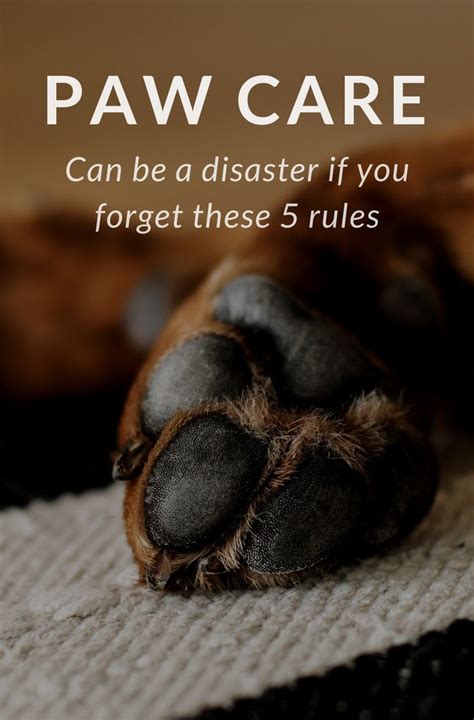Protect Your Pup’s Paws: Essential Care Tips
Every dog owner’s top priority is ensuring their furry companion’s well-being. Paw care is a crucial aspect often overlooked, leading to discomfort and potential health issues. Here’s a comprehensive guide to keep your dog’s paws healthy and protected for a fulfilling life.

1. Trim Regularly
Long nails can cause discomfort and interfere with walking. Trim your dog’s nails every 2-3 weeks using dog-specific nail clippers. Avoid cutting too short, as it can cause bleeding and pain.
2. Moisturize Often
Just like humans, dogs’ paws can benefit from regular moisturizing. Use pet-safe paw balms to keep them hydrated, especially during dry seasons or when exposed to hot pavement.
3. Inspect Daily
Check your dog’s paws for any cuts, cracks, or blisters after every walk or playtime. Early detection can prevent infection and ensure prompt treatment.
4. Clean Thoroughly
When paws get dirty, clean them gently with warm water and a mild dog shampoo. Avoid harsh chemicals that can irritate the skin.
5. Protect from Extreme Temperatures
Hot pavement can burn paws, while cold weather can cause frostbite. Use dog boots or paw wax for extreme temperatures to protect their delicate pads.
Home Remedies VS Professional Care: Comparing Options
Home Remedies
- Epsom salt baths: Soothe sore paws by soaking them in diluted Epsom salt baths.
- Oatmeal baths: Oatmeal’s calming properties can relieve irritation and itching.
- Coconut oil: Apply coconut oil to moisturize and protect paws from chafing.
Professional Care
- Veterinarian visits: Consult a vet if your dog experiences severe paw problems, such as infections or deep cuts.
- Groomers: Professional groomers can provide regular paw care, including nail trimming and paw pads maintenance.
Common Mistakes to Avoid
- Overbathing: Excessive paw washing can strip away natural oils, leading to dryness.
- Using human products: Avoid using human creams or lotions on dog paws, as they can cause irritation.
- Ignoring cuts or cracks: Neglecting paw injuries can lead to infections and further discomfort.
- Walking on hot pavement: Avoid walking your dog on extremely hot surfaces to prevent burns.
- Neglecting winter protection: Failure to protect paws from cold weather can cause frostbite or hypothermia.
Step-by-Step Paw Care Routine
Morning:
- Check paws for any cuts or injuries.
- Trim nails as needed.
- Apply paw balm to moisturize.
Evening:
- Clean paws after walks or playtime.
- Inspect for any swelling or redness.
- Apply paw protection products before bedtime.
Tips and Tricks
- Use paw wax: Paw wax provides an extra layer of protection against extreme temperatures and rough surfaces.
- Carry a first-aid kit: Keep a dog-specific first-aid kit on hand for any paw emergencies.
- Check with your vet: If your dog has ongoing paw problems, consult a veterinarian for professional advice.
Research and Statistics
According to the American Kennel Club, paw problems are the third most common health issue among dogs.
A study by the University of California, Davis found that dogs with paw injuries experience a significant decrease in mobility and activity levels.
The National Pet Owners Survey 2022 reported that 20% of dog owners experience difficulty treating their pet’s paw problems effectively.
Conclusion
Dog paw care is essential for the well-being, comfort, and longevity of our furry companions. By following these essential tips, you can protect your dog’s paws from harm and ensure their paws remain healthy and happy for years to come.





















